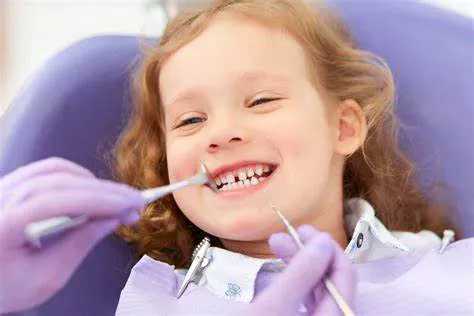Orthodontic treatment is essential for achieving a healthy, functional, and aesthetically pleasing smile. Among the various orthodontic interventions available, comprehensive orthodontic treatment stands out as a holistic approach addressing complex dental and skeletal issues. This article delves into the intricacies of comprehensive orthodontic treatment, its objectives, procedures, and benefits, providing a thorough understanding for patients and dental professionals alike.
What Is Comprehensive Orthodontic Treatment?
Comprehensive orthodontic treatment refers to an extensive, individualized approach aimed at correcting a wide range of dental and skeletal irregularities. Unlike limited or interceptive treatments that target specific problems, comprehensive treatment addresses the overall alignment of teeth, the relationship between the upper and lower jaws, and the harmonious functioning of the oral and maxillofacial structures.
Objectives of Comprehensive Orthodontic Treatment
The primary goals of comprehensive orthodontic treatment include:
Improving Dental Alignment: Correcting misaligned teeth to achieve a uniform and straight appearance.
Enhancing Bite Function: Ensuring proper occlusion, which is the alignment of upper and lower teeth when the mouth is closed.
Promoting Oral Health: Reducing the risk of dental issues such as cavities, gum disease, and tooth wear by facilitating easier cleaning and maintenance of teeth.
Aesthetic Enhancement: Improving the overall facial aesthetics by harmonizing the dental and skeletal structures.
Addressing Skeletal Discrepancies: Correcting jaw alignment issues such as overbites, underbites, and crossbites to improve facial symmetry and function.
See Also: How to Relieve Orthodontic Pain
Stages of Comprehensive Orthodontic Treatment
Comprehensive orthodontic treatment typically involves several stages, each tailored to the patient’s unique needs and conditions. These stages include:
- Initial Consultation and Diagnosis
- Treatment Planning
- Active Treatment Phase
- Retention Phase
Initial Consultation And Diagnosis
The journey begins with a thorough consultation and diagnostic process. This includes:
Clinical Examination: Assessing the patient’s dental and facial structures.
Radiographic Analysis: Utilizing X-rays, including panoramic and cephalometric images, to evaluate the underlying bone structure and tooth positioning.
Photographic Records: Capturing intraoral and extraoral photographs to document the current condition and track progress.
Dental Impressions and 3D Scans: Creating molds or digital scans of the teeth to fabricate precise treatment appliances.
Treatment Planning
Based on the diagnostic findings, a customized treatment plan is developed. This plan outlines the specific goals, methods, and timeline of the treatment. The orthodontist collaborates with the patient to ensure their expectations and concerns are addressed.
Active Treatment Phase
The active phase involves the application of various orthodontic appliances and techniques to achieve the desired outcomes. These may include:
Braces: Traditional metal braces or clear ceramic braces to gradually move teeth into their proper positions.
Aligners: Clear aligners such as Invisalign, which offer a more discreet alternative to braces.
Orthopedic Appliances: Devices like palatal expanders or headgear to correct jaw discrepancies.
Temporary Anchorage Devices (TADs): Mini-implants used to provide additional support for complex movements.
The active treatment phase typically lasts between 12 to 36 months, depending on the severity of the case and the patient’s compliance with the treatment protocol.
Retention Phase
After the active phase, the retention phase is crucial to maintaining the achieved results. This involves:
Retainers: Custom-made devices, either fixed or removable, to hold teeth in their new positions.
Monitoring: Regular follow-up appointments to ensure stability and address any relapse.
Types of Orthodontic Appliances Used in Comprehensive Treatment
Various orthodontic appliances are employed during comprehensive treatment, each serving a specific purpose. These include:
Fixed Appliances: Such as braces, which provide precise control over tooth movement.
Removable Appliances: Such as aligners and retainers, offering flexibility and convenience.
Functional Appliances: Designed to modify jaw growth and improve bite alignment in growing patients.
Auxiliary Devices: Including elastics, springs, and TADs, which aid in achieving complex tooth movements and corrections.
Benefits of Comprehensive Orthodontic Treatment
Comprehensive orthodontic treatment offers numerous benefits, both functional and aesthetic. These include:
Enhanced Oral Function: Improving biting, chewing, and speaking abilities.
Better Oral Health: Facilitating easier cleaning of teeth and reducing the risk of periodontal disease and dental decay.
Improved Self-Esteem: Boosting confidence and self-image with a straighter, more attractive smile.
Long-Term Stability: Providing enduring results through meticulous planning and retention strategies.
Addressing Complex Issues: Tackling intricate dental and skeletal problems that limited treatments might not resolve.
Patient Considerations And Compliance
Successful comprehensive orthodontic treatment relies heavily on patient cooperation. This includes:
Maintaining Oral Hygiene: Regular brushing, flossing, and dental check-ups to prevent complications.
Adhering to Appointments: Consistent attendance at scheduled visits to monitor progress and make necessary adjustments.
Following Instructions: Complying with the orthodontist’s guidelines regarding appliance wear and care.
Advancements in Comprehensive Orthodontic Treatment
The field of orthodontics has seen significant advancements, enhancing the effectiveness and comfort of comprehensive treatment. Innovations include:
Digital Orthodontics: Utilizing 3D imaging, computer-aided design (CAD), and computer-aided manufacturing (CAM) for precise treatment planning and appliance fabrication.
Clear Aligners: Offering a nearly invisible option for teeth straightening with enhanced comfort and convenience.
Self-Ligating Brackets: Reducing friction and treatment time by using a specialized clip instead of elastic ties.
Accelerated Orthodontics: Techniques such as micro-osteoperforation and vibration devices to speed up tooth movement and shorten treatment duration.
Conclusion
Comprehensive orthodontic treatment is a multifaceted approach designed to address a wide range of dental and skeletal issues, resulting in improved function, aesthetics, and oral health. Through a combination of advanced diagnostic tools, personalized treatment plans, and innovative appliances, orthodontists can achieve remarkable results that enhance the quality of life for their patients. Understanding the process and benefits of comprehensive orthodontic treatment empowers patients to make informed decisions and actively participate in their orthodontic journey.

